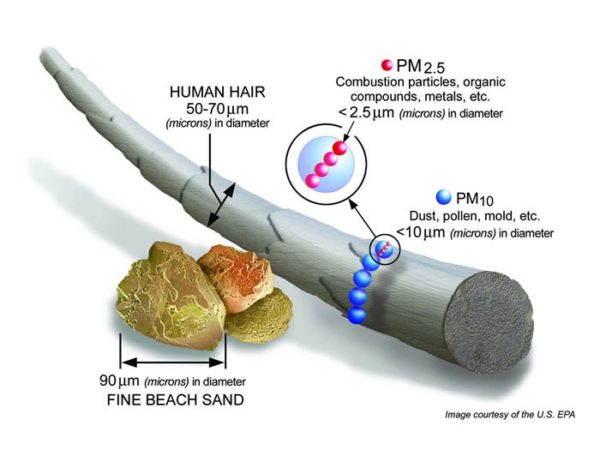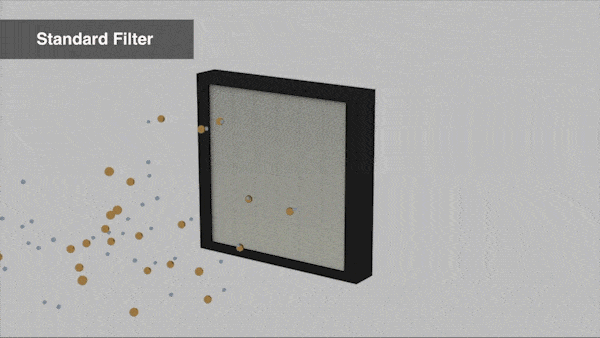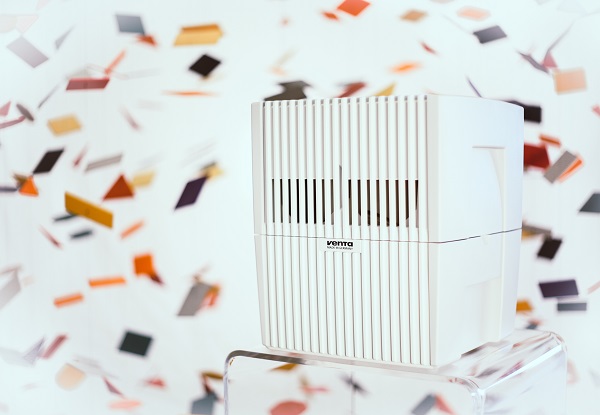Microns is a popular term within the air quality industry. We examine how a tiny unit of measurement for pollution can have huge health implications.
When we talk about our extremely efficient LP60 Air Purifier, we often mention the term microns. Within the air quality industry, microns are used as a term of measurement in describing the size of an airborne particle. For us at Venta, microns are critical to understanding as it helps us to develop innovations in air-crafting technology.
Defining Microns
According to specifications set by the EPA, the national standard for “inhalable particles” is measured as particles 10 microns or smaller. Microns in this instance are a unit of measurement and an abbreviation for micrometer. A micron is one-millionth of a meter in size or about .00004 inches. For something to be seen by the human eye, it would need to be at least 5 microns. To put this into perspective, most, about 98%, of all airborne particles are less than one micron in size.
Microns in Relation to Air Quality

Microns are an important part of understanding air quality, in particular when it comes to studying air pollution and how it affects our health. PM 2.5 is the most commonly studied measurement of air pollution, as it can be extremely dangerous.
The EPA defines PM 2.5 as:
“Fine inhalable particles, with diameters that are generally 2.5 micrometers and smaller. How small is 2.5 micrometers? Think about a single hair from your head. The average human hair is about 70 micrometers in diameter – making it 30 times larger than the largest fine particle.”
Particles this small are dangerous in that they can infiltrate your body’s natural protective layers (skin, mouth, nose, etc.) and settle deep into your lungs, and some may even reach your bloodstream. PM 2.5 often consists of a mixture of chemicals and other environmental pollutants like dust and dirt.
The negative health impacts of particulate matter have long been studied and have been linked to chronic respiratory conditions like asthma and decreased lung function, premature death from heart or lung disease, heart attacks, irregular heartbeats, prenatal problems, and more recently, links to dementia and Alzheimer’s.
Sensitive groups, children, the elderly, and people with asthma or chronic respiratory health issues are impacted by air pollution and particulate matter more than healthy groups, but the concern is still serious for all.
Eliminating Airborne Particles with Venta
While it is important to be aware of the dangers of outdoor air pollution and particulate matter, knowing the dangers of indoor air pollution is just as important if not more important.
Studies have shown that indoor air can be more polluted than outdoor air, and we spend roughly 90 percent of our lives indoors. This is why Venta is committed to developing air quality products that improve your air quality, and thus improving your quality of life.
The revolutionary LP60 Air Purifier features an all-new filter with unmatched filtration capabilities. The VENTAcel Nelior Filter is composed of a homogeneous layer of fibers with each fiber’s diameter measuring at roughly 100 nanometers. This special composition and mechanical stability results in the highest filtration efficiency, achieving 99.95% filtration of all particles equal to or smaller than 0.07 microns. The performance is unsurpassed by all other HEPA filters currently on the market.

Through careful research and design, the innovations in Venta’s air quality products are changing the way we treat indoor air quality. Understanding how airborne pollutants affect our health and wellness helps us create our products with more efficiency.

